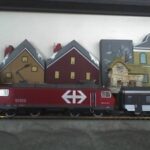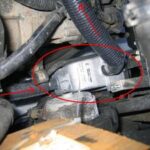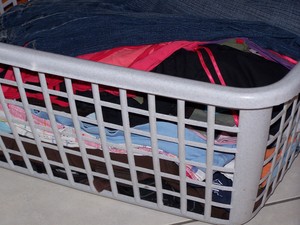In model railroading there are three scales that tend to be dominant. HO scale, O scale and N scale. I have previously written on HO scale (1:87) scale. HO scale is by far the most popular. I am unsure as to whether or not N or O is more popular. O is largely focused on three rail toy train operation in the USA and thus caters to a slightly different market more focused on higher end engine rather than simulating operations on real railroads. Interestingly, even in the popular HO scale it is quite difficult to simulate real railroad operations as rail trains are often much longer in real life than is practical for an average layout. N scale, however, makes it possible to model large scale mainline railroading operations relatively accurately. Although it does not have as much available as HO scale, there is still a huge variety of products on the market.
N scale is only 1:160 size (though scaled slightly larger in Japan and the UK due to Japan’s narrower track gauge and the UK’s smaller motive power). It is around half the size of HO scale and a diesel locomotive is only around three to four inches long. It is not very big. It is quite difficult to detail unless you have a steady hand but up close details are not the primary appeal of N scale. N scale’s two primary appeals are what can be accomplished in a limited space and the ability to simulate real railroading operations. If N scale is around half the size and a 4 x 8 foot is standard in HO scale then you can get just as much done in a quarter of the area of HO scale, only 2 x 4. Realizing this it makes the amount that is crammed into a 4 x 8 seem rather small. Even then the 3 x 5 tends to be a popular N scale layout size. You can cram as much action as you can into a 6 x 10 in HO scale. Finally in a 4 x 8 you can cram in as much N scale action as you can in 8 x 16 in HO scale. That would be a very sizable pike taking up half a standard basement if room is figured in for walkarounds. This is just how much N scale railroading can accomplish. For those who have little space, such as apartment dwellers, N scale is ideal. It is the reason N scale is most popular in Japan where small houses are the rule and even HO scale is too large for most.
N scale also allows one to avoid selective compression of buildings and scenery and allows trains to run approximate to real life. It is possible to build a city scene with skyscrapers in N whereas in other scales they often look overly bulky and distract from the layout. Perhaps more importantly it is possible to model hilly scenery realistically. In scales larger than N it is often difficult to model mountainous operations without resorting to grades much more similar to roller coasters than railroads. N scale alleviates these problems. More importantly is train length. In HO scale a train of even ten cars will appear massive on a small layout but in the real world trains are much much longer. In modern times they can be a mile in length. While even in N scale it is difficult to duplicate this it is still much easier to engage in prototypical operations without your entire train curving around the layout. I have seen HO and O scale layouts with lash ups (multiple engines) but only pulling ten cars or perhaps even less. This is simply a motive power overkill. In N it is possible to model the modern freight train with multiple units and long fifty foot cars with only limited compression.
N scale does not have as extensive a library as HO scale. In HO scale one can find countless variations on the same engine from multiple manufacturers. While N scale does not have HO scale’s massive quantity at the very least it can boast having at least one model of most equipment on major class 1 railroads available for purchase even if it does not have ten manufacturers like in HO scale. Additionally, it has now become practical to install N scale engines with DCC for digital control, something which was rarely seen even ten years ago. N scale has everything one needs to build a decent railroads, there is very little missing.
The advantages of N scale considered there are disadvantages to consider as well. N scale is very small as I have mentioned before. If you are planning on scratchbuilding you should have a very talented hand or otherwise stay away from it. Finescale modelling is possible in N, but requires a great deal of precision. Perhaps the greatest issue with N is keeping trains on the track. I have track problems in HO scale (something I never had in O) but in N scale even the slightest trackwork mistake can lead to serious connectivity problems and derailment. You should remember HO scale equipment is not very heavy whereas N scale weighs only a few ounces. If you have indoor cats as I do, keep doors shut to your train room or they will wreak havoc. Interestingly, in spite of N’s small size there is a small but dedicated band of Nn3 (N narrow gauge modellers) scratchbuilding extremely tiny equipment.
Finally a few words on TT. You may hear this scale mentioned from time to time, particularly in older model railroad periodicals. TT scale once had a small following in the USA. It would be generous to say there are a few hundred American TT modellers, and there are certainly fewer than a thousand. TT is about halfway between HO and N at 1:120 and was invented before N to be the small scale. TT stands for table top since they were marketed to fit on a table top. In Europe, particularly Eastern Europe, TT scale remains popular. In the USA you will scarcely find it outside of a few hardcore modellers who are dedicated to TT and old model railroading periodicals from the 1970s or earlier. I have never actually seen an operating TT scale layout and I have seen every other scale in operation including Z and S, which says something of its rarity. It would be necessary to scratch build most things, however an often overlooked aspect of TT scale is that it equals ten feet per inch, an ideal conversion system for scratch building.





